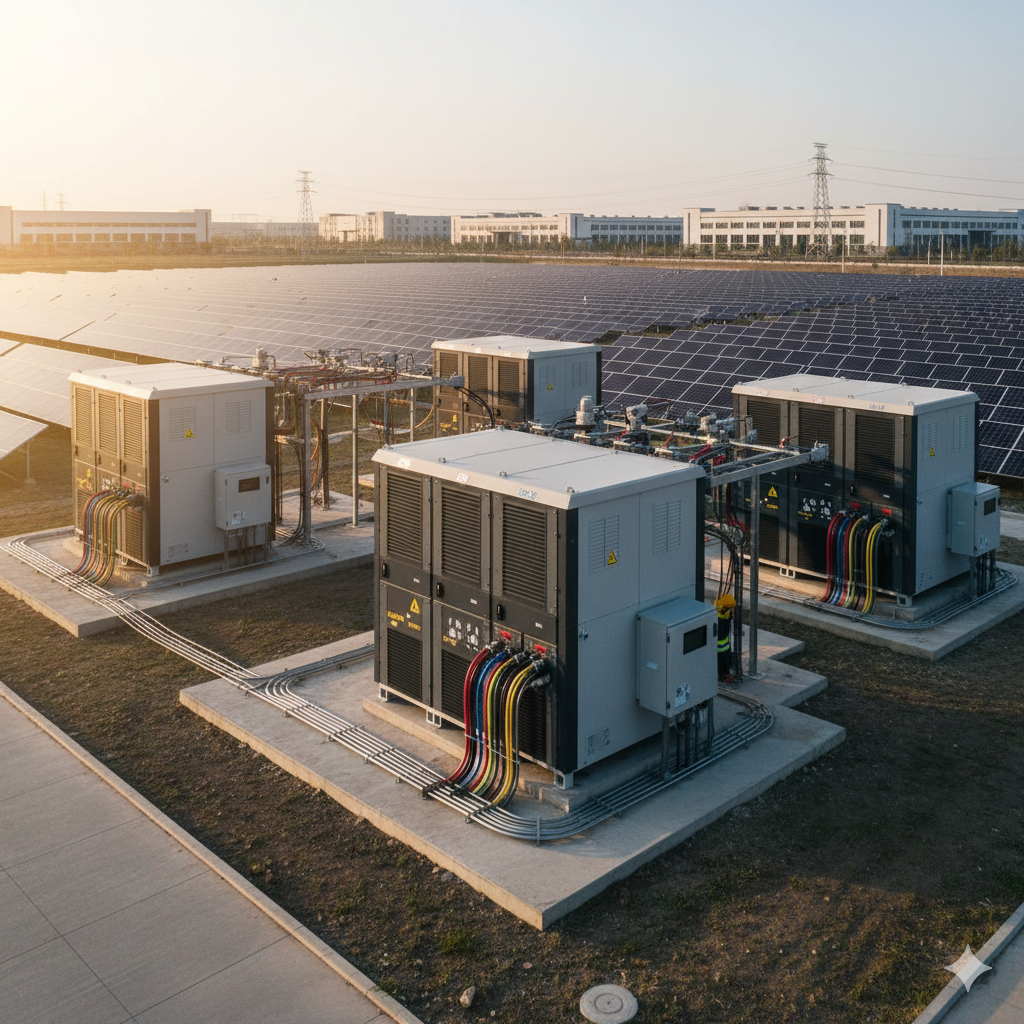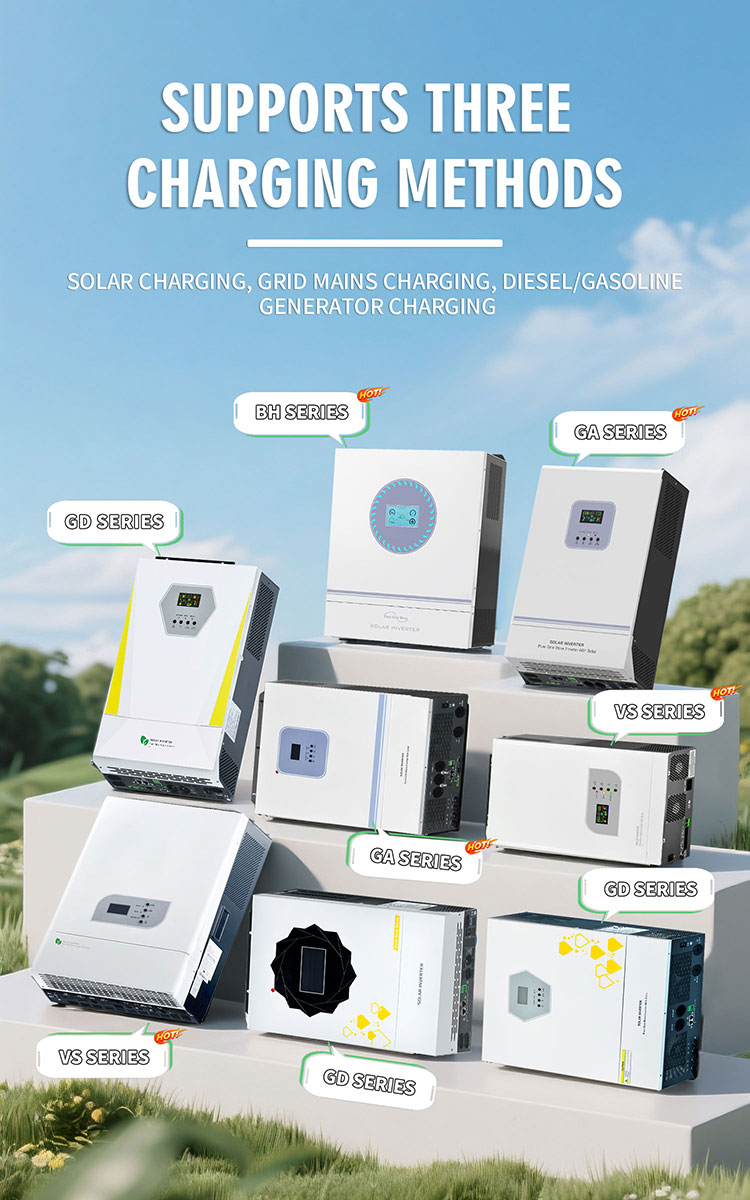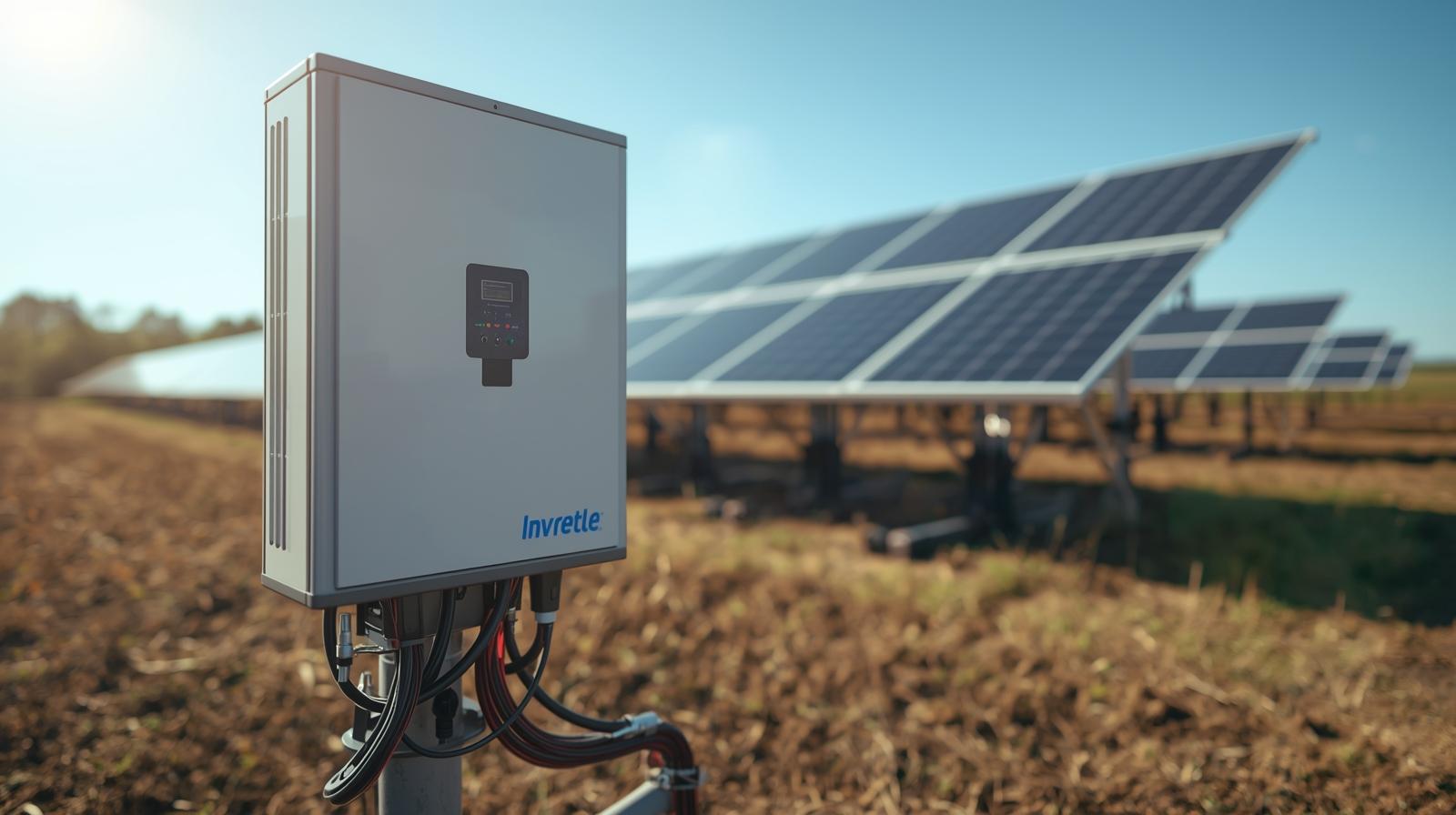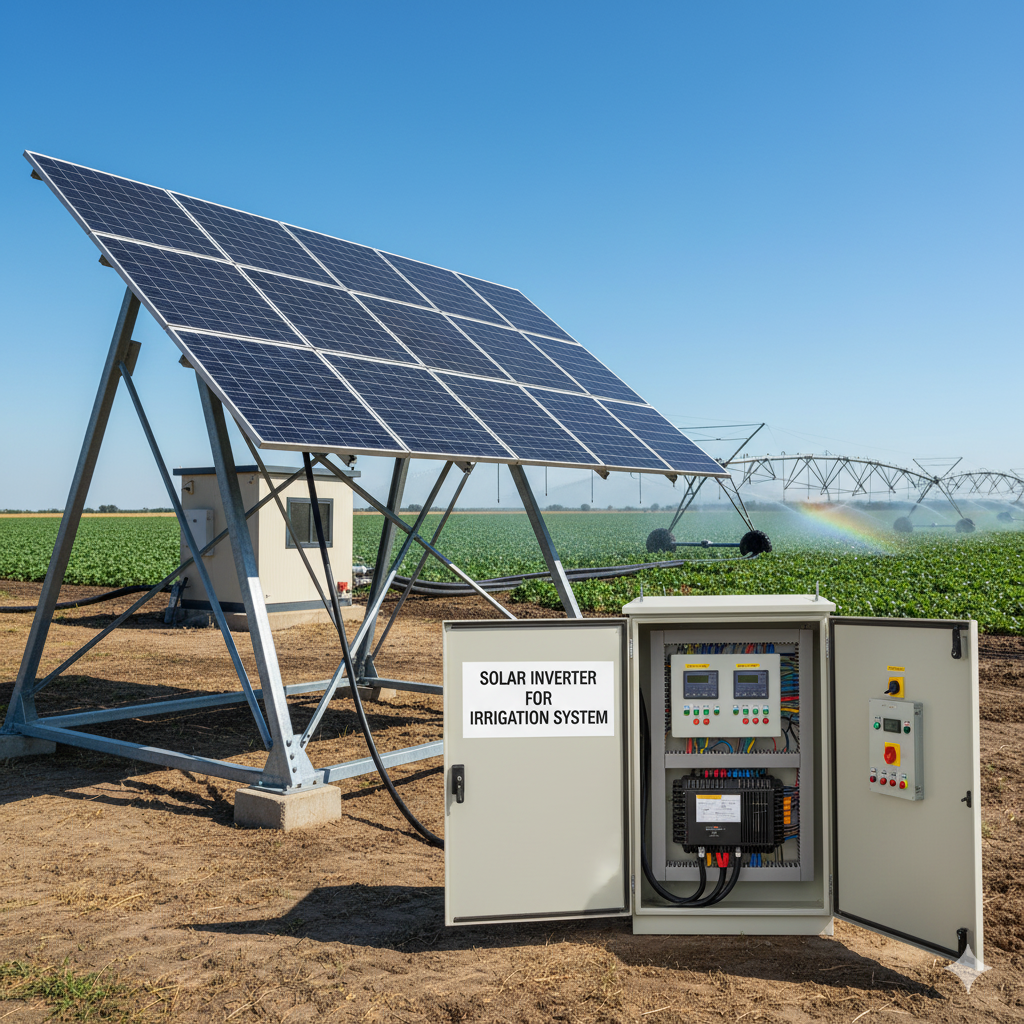
When Energy Becomes a Competitive Advantage
Electricity reliability defines productivity in every industrial zone. From assembly lines to data centers, even brief power interruptions can disrupt operations, damage equipment, and cause major financial losses.
Traditional grid connections often fail to meet the growing energy demand in industrial parks, particularly in developing regions where voltage fluctuation and load imbalance are common.
A dedicated inverter system for industrial parks provides a smarter solution — combining grid power with renewable energy and backup storage to ensure seamless operations 24/7. The result is not only lower energy costs but a stable power foundation for sustainable growth.
Inside the System: How Industrial Inverters Manage Complex Loads
Industrial parks operate with a mix of heavy machinery, HVAC systems, lighting, and office infrastructure — all with varying energy needs. An inverter serves as the energy orchestrator, converting, distributing, and stabilizing power across these diverse loads.
| Component | Function | Benefit |
|---|---|---|
| Solar or Grid Input | Primary energy source | Supplies base power load |
| Inverter Core | Converts DC/AC and stabilizes voltage | Ensures equipment runs smoothly |
| Energy Storage (optional) | Stores surplus energy | Prevents blackouts or production downtime |
| EMS (Energy Management System) | Monitors and controls load | Balances power across departments |
With intelligent control, the inverter automatically switches between power sources — ensuring that production lines never stop, even during grid instability or maintenance cycles.
Engineering Excellence: What Defines a True Industrial-Grade Inverter
Industrial use demands more than high power; it requires consistency, scalability, and resilience.
Advanced inverter systems designed for factories and parks feature:
-
High Conversion Efficiency (≥98%) — reducing power waste and energy loss.
-
3-Phase Output — suitable for high-load equipment such as CNC machines and compressors.
-
Reactive Power Compensation — stabilizes voltage under varying factory demands.
-
Wide Input Voltage Range — adapts to grid fluctuations common in developing zones.
-
Smart Monitoring & Data Interface — enables remote supervision for maintenance teams.
-
IP65 Industrial Protection — safeguards electronics from dust, heat, and moisture.
These capabilities make modern industrial inverters the foundation for smart manufacturing energy ecosystems.
Comparing Power Models: Grid-Only vs. Hybrid Inverter Solutions
| Model Type | Power Source | Cost Efficiency | Reliability | Suitable For |
|---|---|---|---|---|
| Grid-Only System | National power grid | Low upfront, high running cost | Moderate | Stable urban zones |
| Diesel Backup Model | Generator-based | High fuel & maintenance | Limited runtime | Remote industrial parks |
| Hybrid Inverter System | Solar + Grid + Battery | Medium setup, low OPEX | High | All climates and regions |
According to Energy Storage Association (ESA, 2024), hybrid inverter integration in industrial zones can reduce operational energy costs by 30–45% while achieving 99.9% uptime, outperforming conventional backup setups.
Applications: Industrial Environments that Benefit Most
-
Manufacturing Plants
-
Run CNC, molding, and welding systems without grid interruptions.
-
Hybrid setup ensures consistent output during peak hours.
-
-
Food Processing & Cold Storage Facilities
-
Stable inverter power protects refrigeration and automation lines.
-
Energy storage reduces dependency on diesel.
-
-
Textile & Printing Workshops
-
Voltage regulation prevents machine faults and material wastage.
-
-
Industrial Data Centers
-
Redundant inverter arrays ensure 24/7 uptime for servers and cooling.
-
-
Logistics & Packaging Parks
-
Supports continuous conveyor operation and warehouse lighting.
-
These scenarios highlight how inverters act as energy insurance for industrial operations.
Selecting the Right Inverter for Industrial Parks
Choosing the ideal inverter requires analyzing site-specific energy needs, grid reliability, and production load patterns.
| Factory Size | Recommended Capacity | Suggested Features |
|---|---|---|
| Small workshops | 10–20 kW | Basic hybrid inverter with MPPT |
| Mid-sized manufacturing zones | 30–60 kW | Multi-string inverter + remote EMS |
| Large industrial parks | 100 kW–500 kW+ | Modular inverter + parallel connection design |
| Off-grid operations | Hybrid inverter + storage | 3-phase backup with 10 ms switching speed |
Tip: Always select inverters with built-in surge protection and harmonic filtering to protect sensitive industrial devices.
Frequently Asked Questions
Q1: Can industrial inverters handle 24-hour operations?
Yes, they are designed for continuous duty cycles with advanced cooling and overload protection systems.
Q2: How do hybrid inverters respond to grid outages?
They instantly switch to stored or solar power, ensuring uninterrupted production.
Q3: Are these systems compatible with existing grid infrastructure?
Absolutely. They can integrate seamlessly without major rewiring or operational disruption.
Q4: What’s the ROI period for industrial-scale systems?
Typically 3–5 years, depending on local electricity tariffs and solar potential.
Building Smarter Industrial Energy with Inverters
Industrial competitiveness increasingly depends on energy reliability. A robust inverter system transforms power from a utility challenge into a strategic asset — enabling smooth production, predictable costs, and compliance with sustainability goals.
At Thlinksolar, we engineer high-efficiency inverters designed for industrial-grade use — combining hybrid flexibility, three-phase stability, and long-term durability. Our systems empower manufacturers to maintain production continuity and energy independence.
To explore customized inverter solutions for your industrial facility, visit our homepage or contact our technical team via the contact page.


